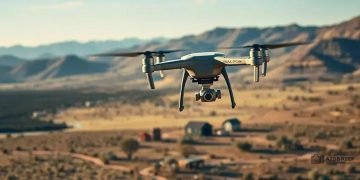Biometric identity verification in emergency aid distribution

Biometric identity verification in emergency aid distribution ensures rapid and secure identification, enhancing aid delivery efficiency while mitigating fraud and improving accountability in humanitarian efforts.
Biometric identity verification in emergency aid distribution is gaining traction as a way to streamline support for those in need. Have you ever wondered how technology can enhance disaster response? This article delves into the fascinating methods and potential of biometric solutions in crisis situations.
Understanding biometric identity verification
Understanding biometric identity verification is essential as we explore its role in emergency aid distribution. This innovative technology utilizes unique physical characteristics, like fingerprints and facial recognition, to confirm a person’s identity quickly and accurately.
One significant advantage of biometric identity verification is the speed at which it operates. Traditional identification methods, such as paperwork or ID cards, can take time and are prone to errors. However, biometric systems can process identities in seconds, enabling rapid assistance during crises.
How It Works
Biometric identity verification relies on sophisticated algorithms that analyze traits like facial features or fingerprints. These traits are then converted into digital templates stored in a secure database. When someone needs assistance, their biometric data can be matched against existing records.
- Facial recognition technology scans and analyzes facial features.
- Fingerprint readers detect and compare unique patterns of ridges and valleys.
- Voice recognition systems identify individuals based on speech patterns.
This technology is especially useful in emergency situations where quick identification is crucial. Imagine a natural disaster scenario where lifesaving resources need to reach affected individuals without delay. Biometric systems facilitate this process, ensuring the right people receive the aid they need without fraud or identity confusion.
Benefits of Biometric Identity Verification
There are numerous benefits associated with biometric identity verification. For example, it enhances security in aid distribution by preventing impersonation and misuse of resources. Moreover, it provides a reliable way to manage records and streamline the allocation of assistance.
Furthermore, biometric systems can adapt to various environments, making them suitable even in remote or challenging conditions. As technology advances, the accuracy and efficiency of these systems continue to improve, paving the way for even broader applications in emergency aid scenarios.
By utilizing biometric identity verification, organizations can not only enhance the efficiency of aid distribution but also foster trust among those they serve. As we navigate future challenges in emergency management, this technology promises to be a key player.
Benefits in emergency situations
The benefits of biometric identity verification in emergency situations are numerous and impactful. In times of crisis, ensuring that aid reaches those who truly need it is vital. Biometric systems offer a reliable way to manage identities and improve the distribution of resources.
One key advantage is the enhanced security these systems provide. Biometric technology helps to prevent fraud by ensuring that only verified individuals can receive aid. This builds trust in the process and discourages dishonest practices that can drain resources from those genuinely in need.
Speed and Efficiency
In emergencies, speed is crucial. Biometric identity verification operates quickly, allowing aid workers to confirm identities almost instantly. This swift processing means that assistance can be delivered without unnecessary delays, which can be critical in survival situations.
- Fast identification reduces waiting times for aid.
- Helps streamline the distribution of essential supplies.
- Minimizes the risk of incorrect or duplicate allocations.
As these systems evolve, they become increasingly easy to use. Mobile devices equipped with biometric capabilities can be utilized in the field, allowing workers to verify identities anywhere, regardless of infrastructure. This adaptability makes biometric systems essential in remote or disaster-struck areas.
Data Management and Accountability
Another notable benefit is the improved data management that comes with using biometric identity verification. Each verified identity is logged, creating an accurate record of who has received aid. This transparency helps organizations track assistance and assess the effectiveness of their operations.
Moreover, accountability is enhanced through biometric systems. By ensuring that only verified individuals receive aid, organizations can better manage their resources and provide accurate reports to stakeholders. This is particularly important for humanitarian organizations that rely on donor funding and need to demonstrate effective use of contributions.
With these benefits in mind, it’s clear that biometric identity verification plays a crucial role in emergency situations. As technology advances, the potential for these systems to save lives and improve aid efficiency continues to grow.
Challenges and limitations

While biometric identity verification offers numerous advantages in emergency aid distribution, it also faces several challenges and limitations. Understanding these issues is essential to improving systems and ensuring their effectiveness in real-world scenarios.
One significant challenge is the reliability of biometric systems. Factors such as lighting, environmental conditions, and even age can affect the accuracy of recognition technologies. For instance, in a disaster zone, poor lighting or harsh weather may hinder the effectiveness of facial recognition systems, making it difficult to verify identities promptly.
Privacy Concerns
Privacy is another critical concern associated with biometric technology. Many individuals feel uncomfortable with the idea of their biometric data being collected and stored. The misuse of such sensitive information could endanger personal privacy and lead to identity theft. It is crucial that organizations implement robust security measures to protect this data and ensure that it is used ethically.
- Data breaches can expose personal biometric information.
- Unauthorized access may lead to fraudulent activities.
- Lack of clear policies can result in misuse of data.
Additionally, the cost of implementing biometric systems can be a barrier for many organizations. Advanced technologies often require substantial investments in hardware, software, and training. For smaller organizations or those operating in developing countries, these costs can be prohibitive, limiting their ability to adopt these effective solutions in urgent situations.
Technical Limitations
Technical limitations also pose challenges for biometric identity verification. Not all technology is foolproof, and false positives or negatives can occur. A false positive might result in the wrong person receiving aid, while a false negative could deny assistance to someone who truly deserves it. These issues can have serious implications in emergency circumstances.
Moreover, extensive training is often necessary to ensure that staff can use biometric systems effectively. This requirement can add to the time and resources needed before biometric identification can be employed in the field.
Real-world applications in aid distribution
Real-world applications of biometric identity verification in aid distribution showcase how this technology can transform humanitarian efforts. By using biometric systems, organizations can enhance their ability to provide help effectively, especially in crisis situations.
One notable example is in refugee camps, where identification can be a significant challenge. Many individuals may lack proper documentation. Biometric systems allow aid workers to register refugees by their unique physical traits, such as fingerprints or facial recognition. This approach ensures that assistance goes to the right people without the complications of traditional ID processes.
Distributed Ledger Technology
Combining biometric verification with distributed ledger technology has proven effective. This combination helps create a secure and transparent record of who has received aid. Such systems can track the distribution process in real-time, preventing resource misallocation and minimizing waste.
- It increases accountability among aid organizations.
- Ensures that beneficiaries receive the right amount of assistance.
- Enhances the traceability of aid provided to those in need.
Another application can be seen during natural disasters. When rapid assistance is necessary, biometric technology enables quick identity verification for affected individuals. For example, in the aftermath of a hurricane, aid workers can use mobile biometric devices to verify identities, speeding up the distribution of food and medical supplies.
Vaccination Programs
Biometric systems also play a role in vaccination programs, especially in remote areas. By confirming identities through biometrics, organizations can ensure that individuals receive the correct vaccinations without duplication, which is essential in maintaining accurate health records.
This technology not only improves efficiency but also fosters trust within the communities being served. People are more likely to engage with aid programs that rely on advanced, secure verification methods. As organizations continue to refine their use of biometric identity verification, the potential for improving aid distribution remains high.
Future trends and innovations
The future of biometric identity verification in emergency aid distribution looks promising with several upcoming trends and innovations. As technology advances, new solutions are emerging that could enhance the effectiveness of aid delivery.
One significant trend is the integration of artificial intelligence (AI) with biometric systems. AI can analyze biometric data more efficiently and accurately, improving the speed and reliability of identity verification. For example, machine learning algorithms can adapt to various conditions, enhancing recognition performance even in challenging environments.
Mobile Biometric Solutions
Another innovation is the rise of mobile biometric solutions. Portable devices equipped with biometric sensors allow aid workers to verify identities on the go. This mobility enables real-time identity checks in remote locations, ensuring that aid reaches those who need it the most.
- Mobile devices can process biometric data quickly.
- Field agents can work without reliance on fixed infrastructure.
- This technology offers flexibility to respond to dynamic situations.
Furthermore, the use of blockchain technology alongside biometric verification is gaining attention. Blockchain can secure and verify biometric data, ensuring that the information remains tamper-proof. This combination can enhance trust and accountability in the aid distribution process.
Enhanced Privacy Features
As concerns over privacy continue, innovations focusing on protecting personal data are essential. Future biometric systems may incorporate advanced encryption methods and consent protocols. This can help ensure that individuals are fully aware of how their data is used, fostering trust in the system.
The trend toward increased collaboration among humanitarian organizations could also lead to better biometric solutions. By working together, agencies can share best practices and technology, resulting in more effective aid distribution systems. The pooling of resources allows for greater innovation and implementation of biometric technologies across a wider range of emergency scenarios.
Overall, the integration of new technologies and increased focus on privacy will likely shape the future of biometric identity verification in emergency aid distribution. With these innovations, it’s possible to enhance aid delivery while ensuring personal rights are respected.
FAQ – Frequently Asked Questions about Biometric Identity Verification in Emergency Aid Distribution
What is biometric identity verification?
Biometric identity verification uses unique physical traits, like fingerprints or facial recognition, to confirm an individual’s identity quickly and accurately.
How does biometric verification enhance aid distribution?
It speeds up identity checks, reduces fraud, and ensures that aid goes to those who truly need it without delays.
What challenges does biometric identity verification face?
Challenges include privacy concerns, technical limitations in various environments, and the high costs of implementation.
What trends are shaping the future of biometric systems in aid distribution?
Future trends include the integration of AI for improved accuracy, mobile solutions for on-the-go verification, and enhanced privacy measures.





